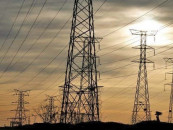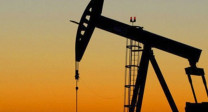Margins, freight rates increased for OMCs
Experts term move positive development for earnings of oil companies

The government has increased margins and freight rates for oil marketing companies (OMCs) and the petroleum levy on high-speed diesel.
In the latest oil price revision, the government has hiked the margins on petrol by Rs0.32 to Rs4 per litre. As far as diesel is concerned, the margins were jacked up by Rs1.32 to Rs5 per litre.
Experts say that this is a positive development for the OMCs as their earnings will improve.
The Economic Coordination Committee (ECC) of the cabinet has already approved margins of Rs6 per litre on petrol and diesel for the OMCs. However, it clarified that it would be subject to the variation in oil prices.
Therefore, the oil companies were expecting that the margins would be raised to Rs6 per litre.
The government has already approved margins of Rs7 per litre for the petroleum dealers but did not approve it for the oil companies, which led to protests by them.
Later, the ECC okayed margins of Rs6 per litre, but the recent increase was not in line with expectations of the oil industry.
Moreover, the government has increased the Inland Freight Equalisation Margin (IFEM) on petrol and diesel to Rs6.69 and Rs1.9 per litre respectively.
Freight is calculated by the Oil and Gas Regulatory Authority (Ogra) and it does not go to the national exchequer. It is the cost of moving petroleum products across the country, which is paid to the OMCs depending on how much and where they transport products.
This is also positive for the cash flow of OMCs since their distribution cost has increased significantly after the rise in fuel prices over the last few months.
Analysts say the hike in OMCs’ margins will improve their annual recurring earnings by the maximum. However, the impact may be diluted if an OMC is subject to turnover tax after incurring inventory losses due to a decline in oil prices.
The increase in OMCs’ margins is positive for the long term, but in the short term they are exposed to the declining oil prices, which pose the risk of significant inventory losses in the ongoing quarter, analysts said in a report compiled by Sherman Research.
The government has also increased the petroleum levy on high-speed diesel to almost double from Rs12.59 to Rs25 per litre, an increase of Rs12.41 effective from December 1, 2022.
It has already increased the petroleum levy on petrol and high octane blending component (HOBC) to Rs50 per litre, which is the maximum levy approved in the budget.
The government kept the price of diesel unchanged in the latest announcement in a bid to raise the petroleum levy so that it could collect more revenue from the oil consumers.
It has also increased the levy on kerosene oil by Rs1.03 to Rs7.01 per litre and on light diesel oil (LDO) by Rs7.49 to Rs15.39 per litre.
Diesel is widely used in the agriculture and transport sectors. Pakistan Army is a key user of kerosene oil in the northern parts of the country. Its demand increases especially in the winter season for cooking and heating purposes. LDO is used by the industry.
LPG prices raised
As the winter season sets in, liquefied petroleum gas (LPG) has also become more expensive. Ogra has notified an increase in the LPG price by Rs11.79 per kg, or Rs139.13 per 11.8 kg domestic cylinder, for the month of December 2022.
The price for LPG producers has gone up by Rs11,790.08 to Rs175,006.45 per ton.
The domestic cylinder will be available at Rs2,065.08 in December against Rs1,925.95 per cylinder in November.
Published in The Express Tribune, December 2nd, 2022.
Like Business on Facebook, follow @TribuneBiz on Twitter to stay informed and join in the conversation.



















COMMENTS
Comments are moderated and generally will be posted if they are on-topic and not abusive.
For more information, please see our Comments FAQ